Vipera aspis
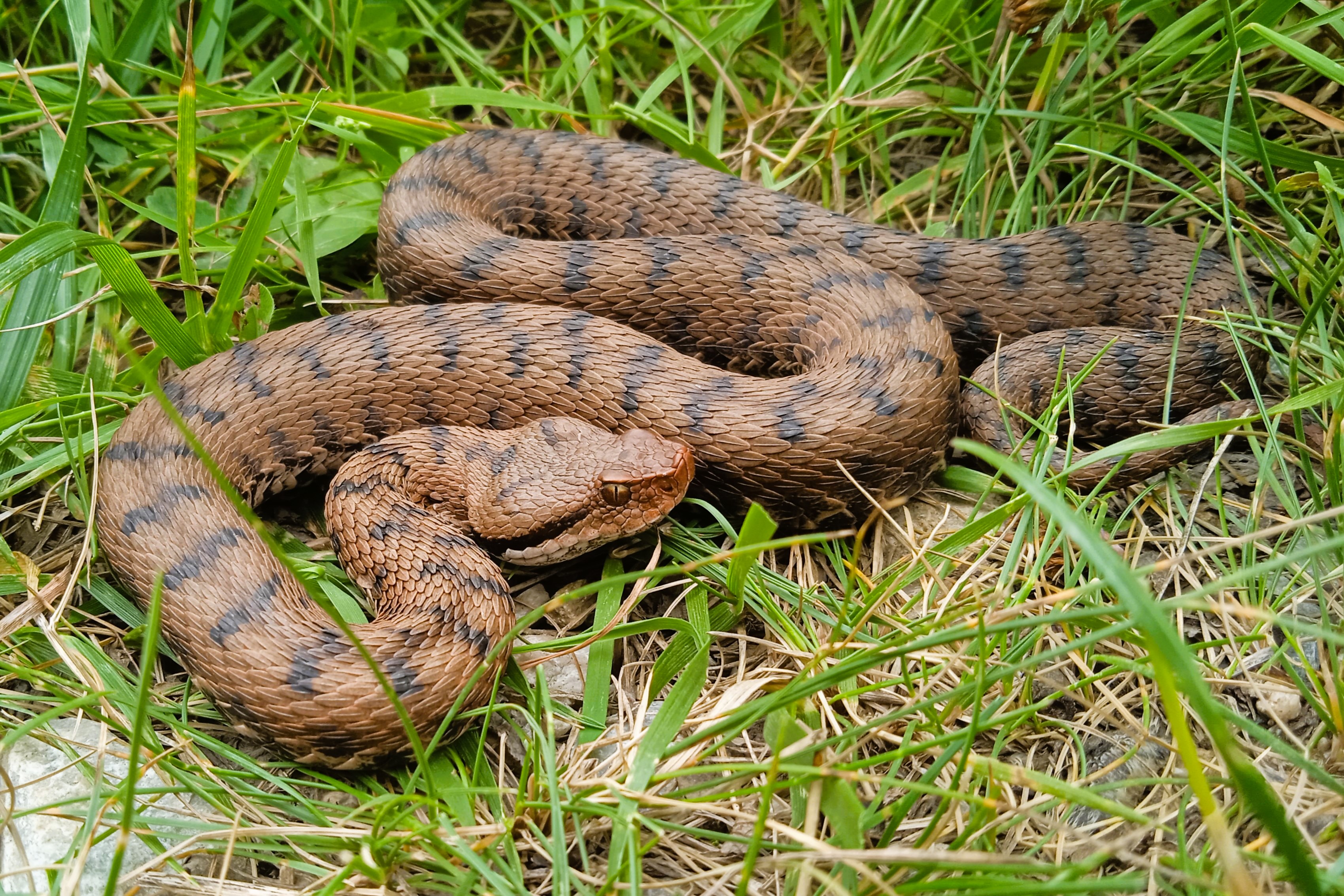

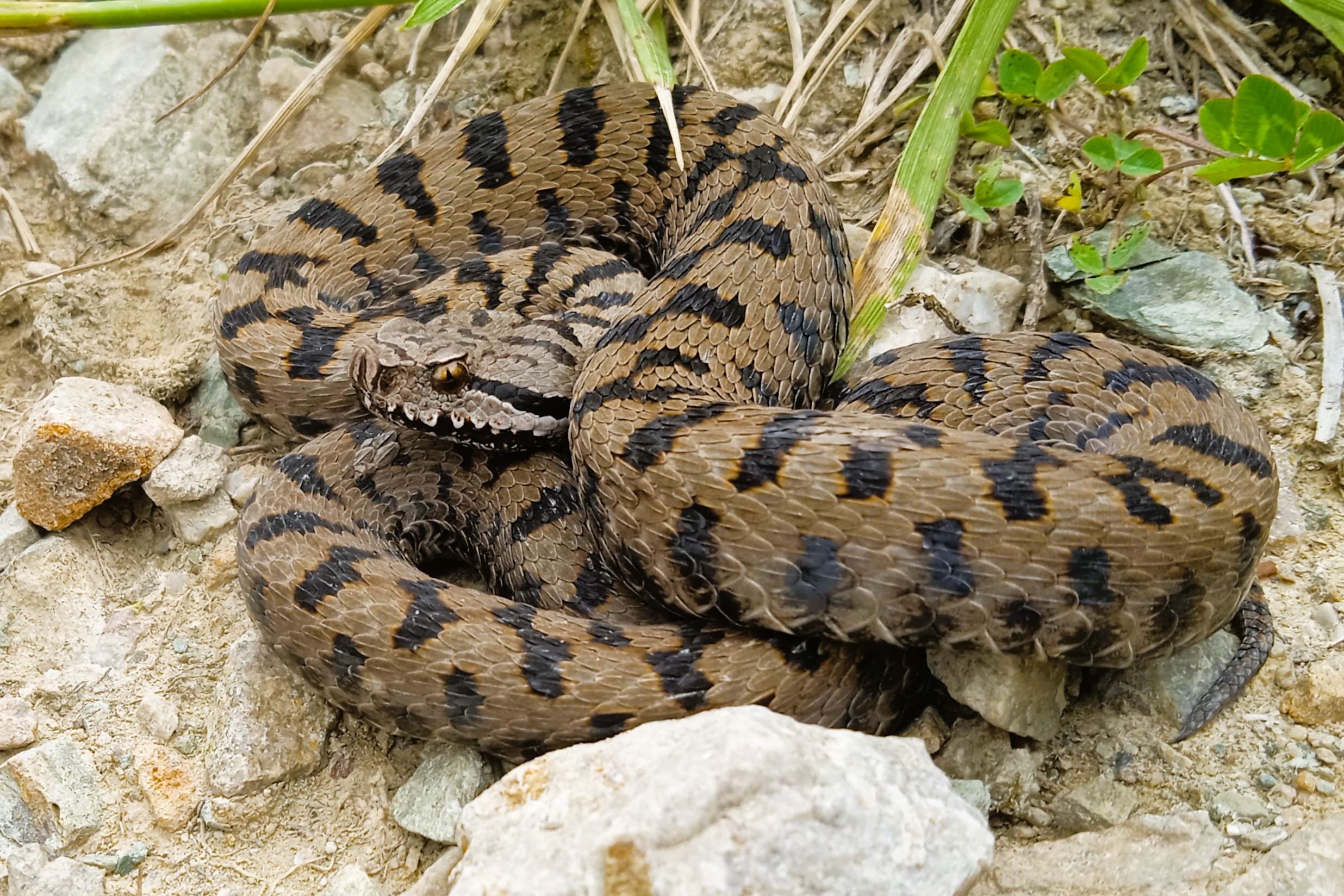
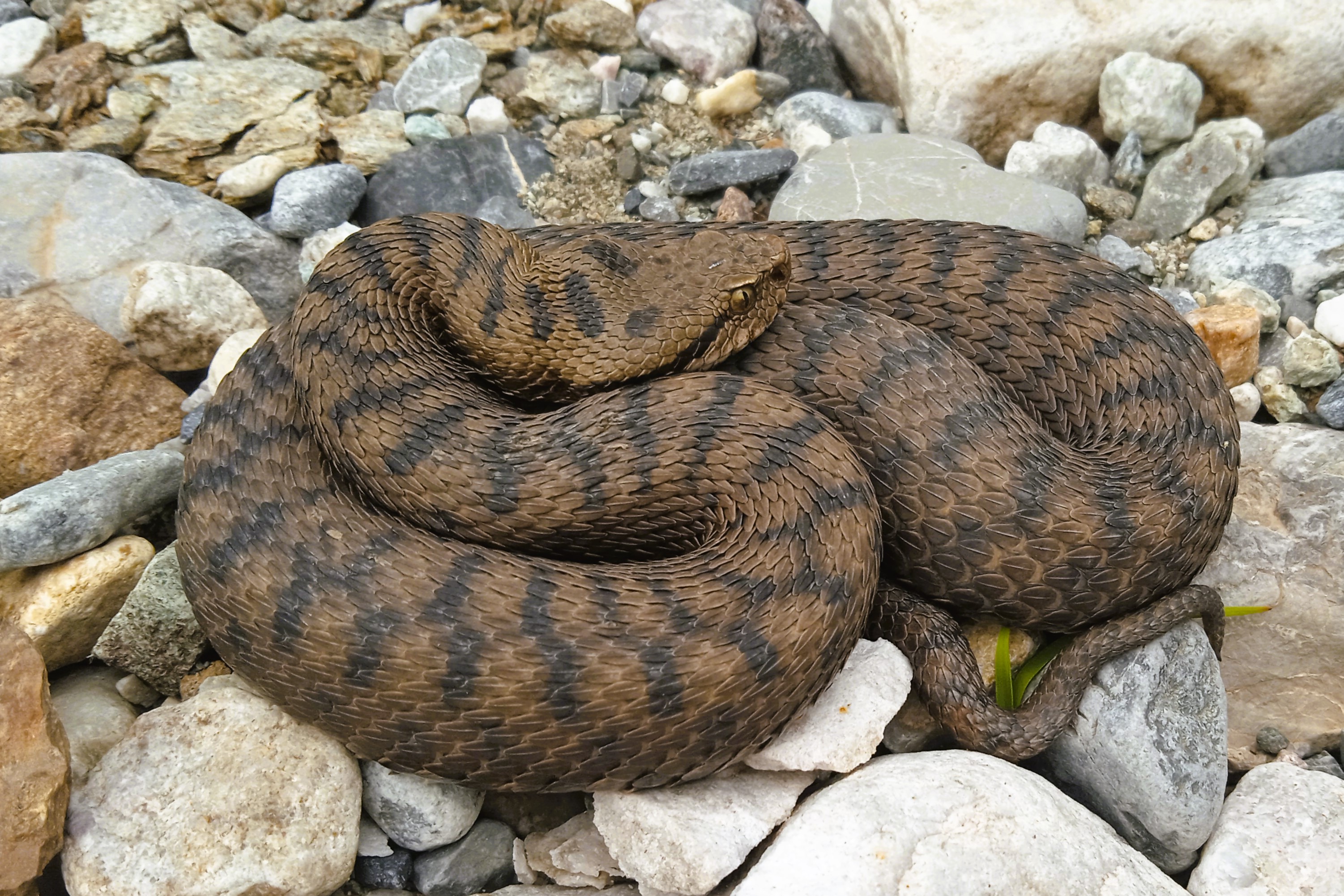


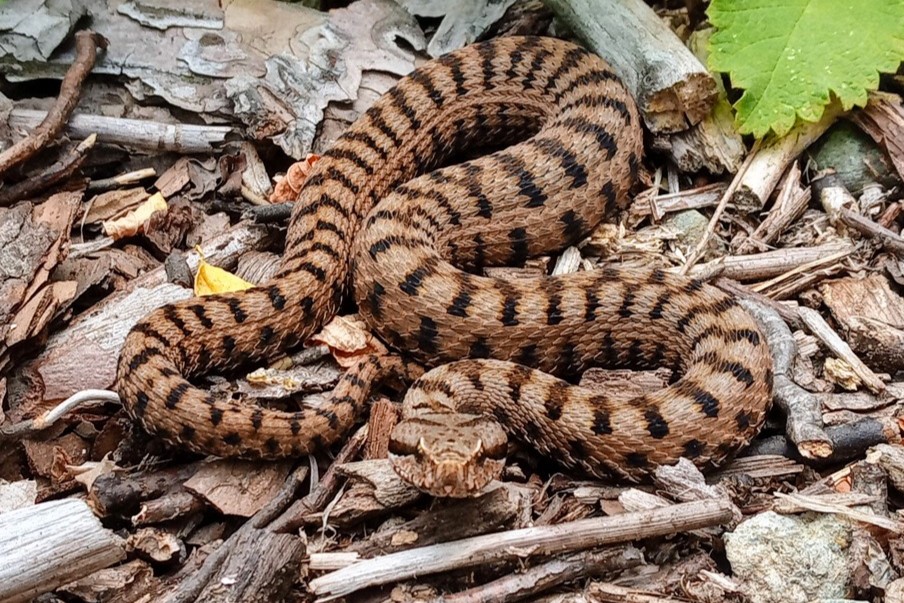
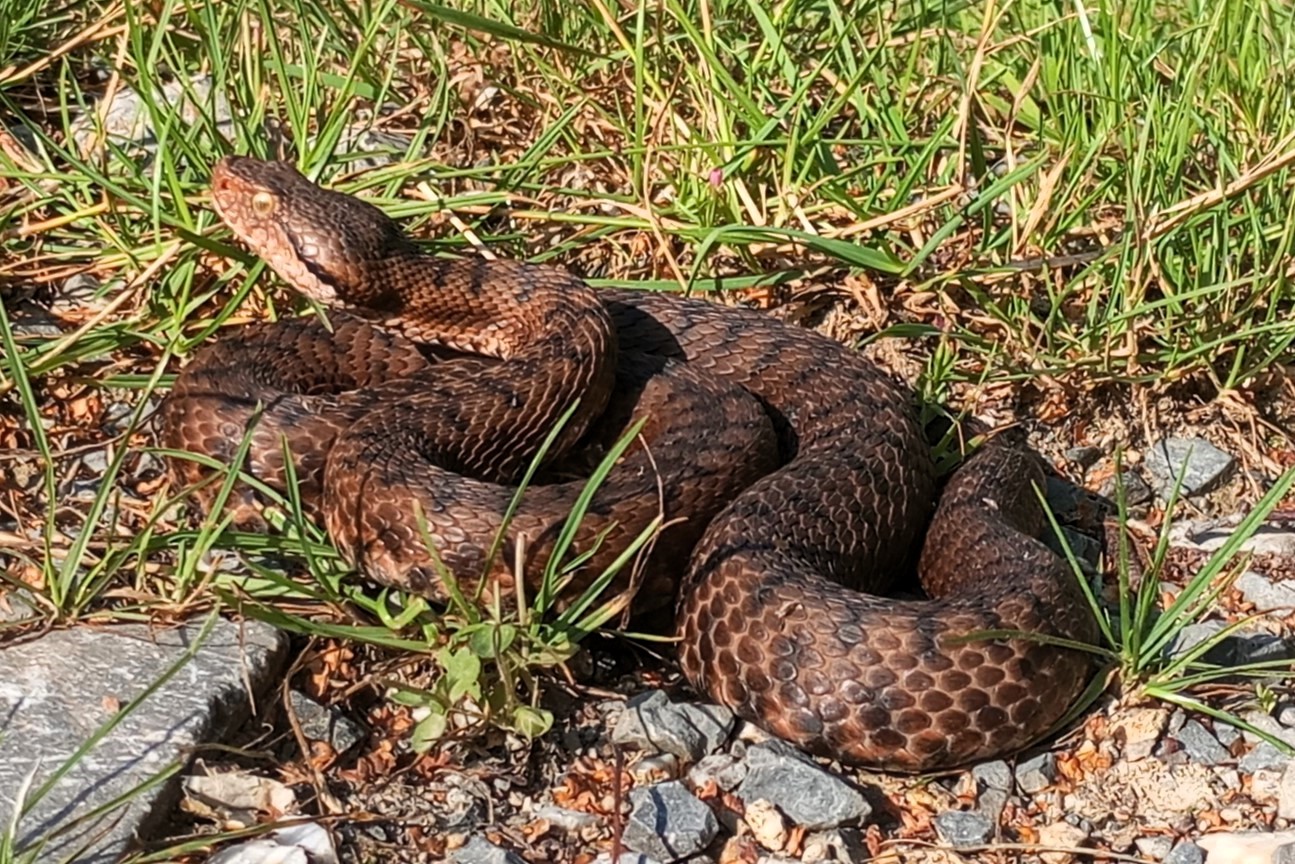


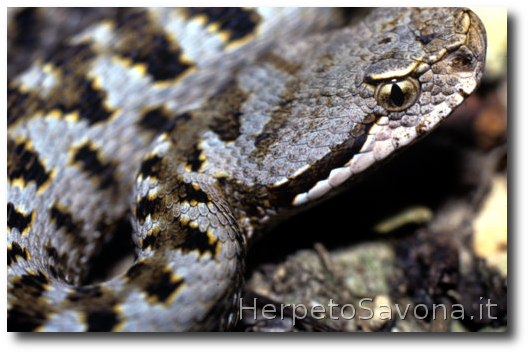
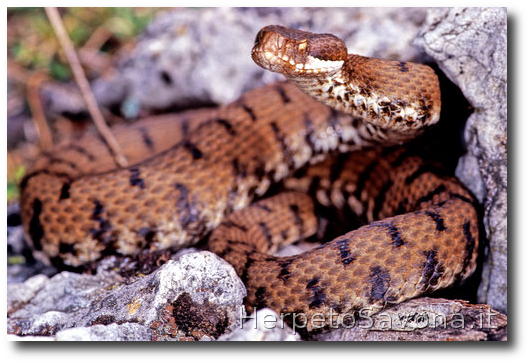
Reptilia → Squamata → Viperidae → Vipera → Vipera aspis
Vipera, Lipra, Üpega
The Common Viper ( Vipera aspis ), often feared and little known, is the most representative venomous snake of Ligurian hilly and mountainous landscapes.
It is a robust and compact reptile, with a stocky body, short and conspicuous tail, a distinctly triangular head well separated from the neck, and a slightly upturned snout—features that distinguish it from similar species.
Sexual dimorphism is mainly seen in size: adult females reach 26–30 in (65–75 cm), while males rarely exceed 26 in (65 cm).
The dorsal scales are strongly keeled; the eyes have a vertical pupil, a typical viperid detail.
The coloration pattern is extremely variable: the background color ranges from gray to brown or reddish, crossed by a zigzag dorsal band or transverse bars; melanistic (completely black) individuals also occur. The venter (underside) is usually dark gray or blackish, with the tip of the tail often yellowish or orange in juveniles.
In western Liguria, the Common Viper is represented by the subspecies Vipera aspis aspis, typical of alpine and prealpine environments, and is mainly found in hilly and mountainous areas, from 980 ft up to about 6,560 ft (300 m up to about 2,000 m) in altitude.
Rarer along the coast and in highly urbanized areas, it displays a patchy distribution, with populations often isolated.
In lowlands, its presence is sporadic, favored only by remnant habitats, ruins, and sparsely inhabited zones.
It favors rocky areas, dry grasslands, the edges of mixed woods and clearings, old dry-stone walls, shrubby zones, and ecotonal stretches where the transition between different types of vegetation offers both shelter and abundant prey.
It tolerates strong temperature fluctuations and makes extensive use of south-facing microhabitats, especially in the sunny hours of morning and evening.
The Common Viper is primarily diurnal, but can become crepuscular or nocturnal during summer heatwaves.
It displays territorial behavior and tends to blend perfectly into its surroundings, making it difficult to spot.
It is shy and prefers to avoid contact with humans, biting only if threatened or stepped on.
Activity is concentrated from March to October, with winter hibernation in underground shelters.
Reproduction occurs in spring, and the species is viviparous: each female gives birth to 4–8 fully formed young between August and September, which are immediately independent and already possess functional venom.
The diet of the Common Viper varies over its lifespan: juveniles feed mainly on lizards, small rodents, and large invertebrates such as orthopterans or earthworms, while adults mainly prey on micromammals, saurians, and only occasionally small birds.
The viper regulates rodent populations, contributing to the balance of rural and natural ecosystems.
The main threats to the species in western Liguria include the destruction of suitable habitats (barriers to dispersal, urban development, intensive agriculture), fires, systematic killing by humans, road accidents, and the isolation of populations due to habitat fragmentation.
Despite protection by national law, there are ongoing societal pressures due to widespread fear and misinformation.
The venom of the Common Viper is composed of a complex mixture of enzymes, proteins, and toxins which primarily have hemorrhagic and necrotic effects; however, its danger is often overestimated: the median lethal dose for a healthy adult exceeds 0.0018 oz (50 mg), whereas a bite injects on average 0.0004–0.0007 oz (10–20 mg).
In Liguria, fatal cases are extremely rare (<0.1%) and mainly involve vulnerable individuals (children, elderly, allergic persons, or in the case of multiple bites).
The most common symptoms include intense pain, swelling, local changes, and rarely severe systemic effects.
Treatment involves immobilizing the affected area, clinical observation, and, if necessary, hospital administration of antivenom.
Tourniquets and attempts to suck the venom are not recommended.
The ecological role of the species should be highlighted: by regulating rodent populations, the Common Viper is both a key biodiversity indicator and an essential player in ecosystem balance.
Knowledge and respect for this species are crucial for coexistence and the protection of our natural environments; current regulations prohibit killing and capture.